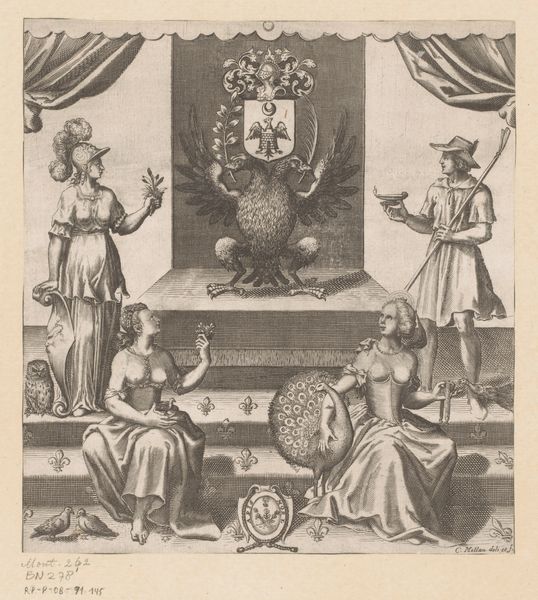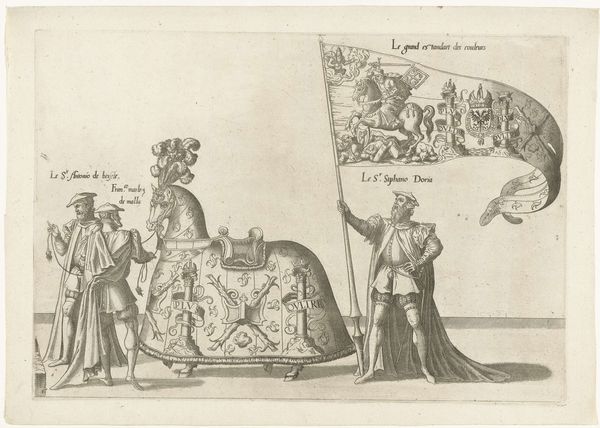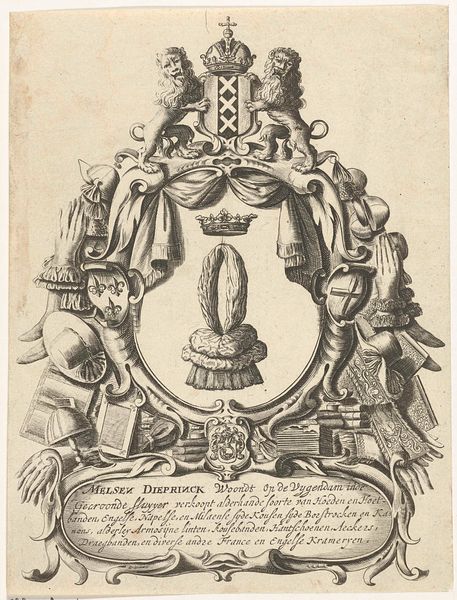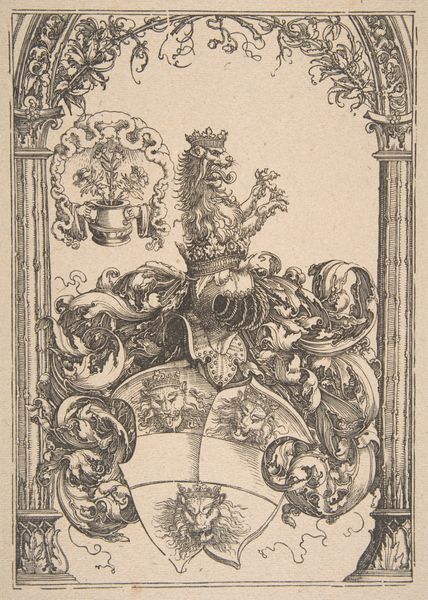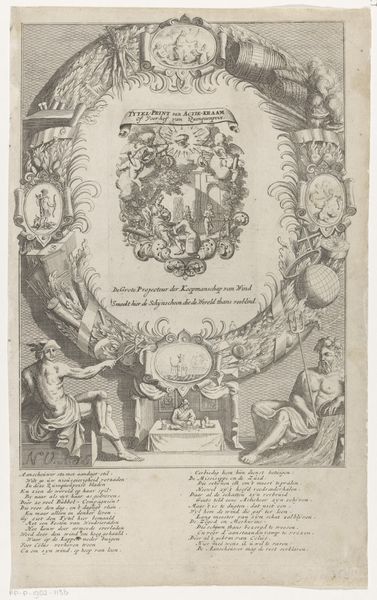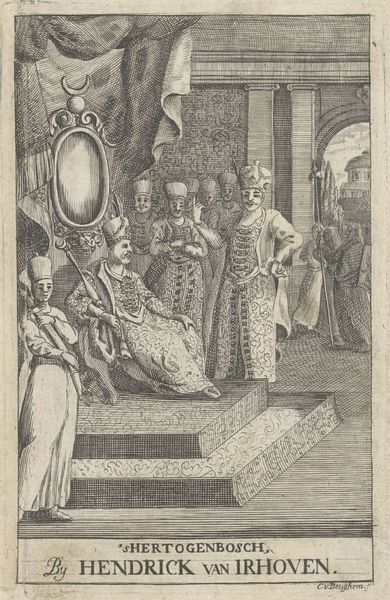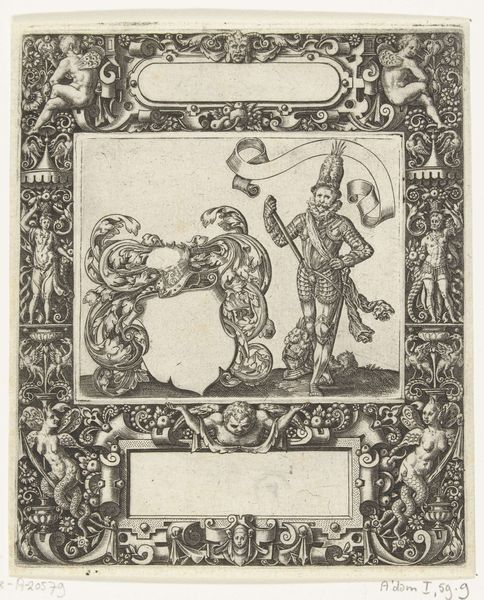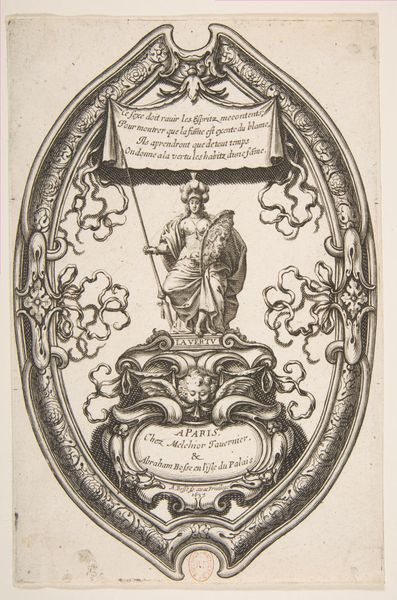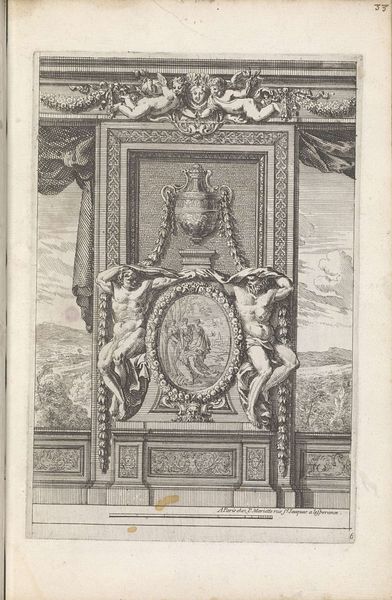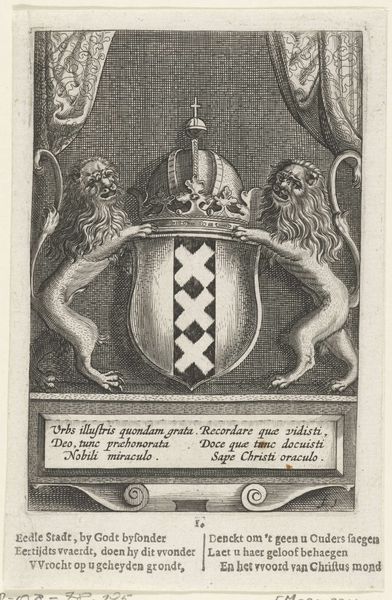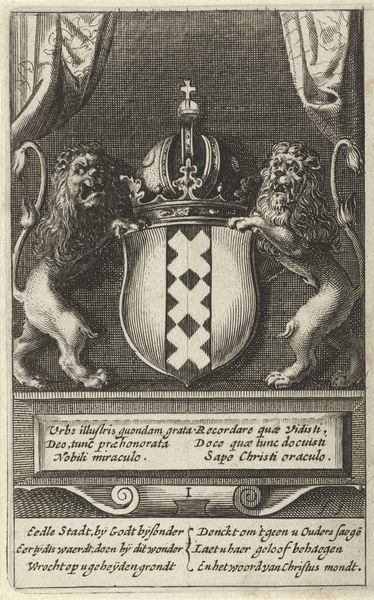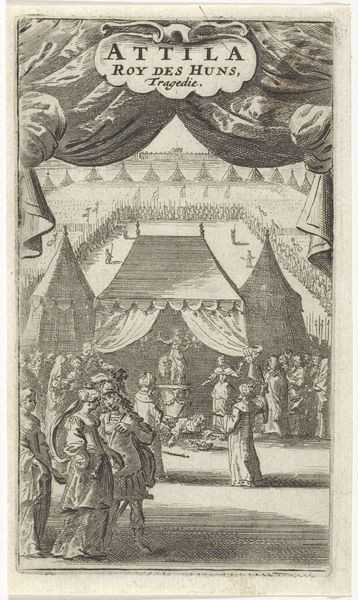
print, engraving
#
portrait
#
light pencil work
#
quirky sketch
# print
#
old engraving style
#
sketch book
#
mannerism
#
figuration
#
personal sketchbook
#
sketchwork
#
pen-ink sketch
#
sketchbook drawing
#
storyboard and sketchbook work
#
sketchbook art
#
engraving
Dimensions: height 140 mm, width 116 mm
Copyright: Rijks Museum: Open Domain
Editor: So, this engraving, "Leeg wapenschild met man en vrouw als schildhouders" from around 1550 to 1587 by Abraham de Bruyn, shows a blank coat of arms flanked by a finely dressed man and woman. It looks almost like a template. What's particularly interesting is the intricate detail achieved through the engraving process. How do you read this piece? Curator: From a materialist perspective, it's compelling to consider this engraving not just as an aesthetic object, but as a product of its time. The choice of engraving—a repeatable, relatively accessible medium—speaks to a broader social context. Think about the labor involved, the societal need it fulfilled. How would this compare to, say, commissioning a unique painting? Editor: That’s a great point! Engravings would have been far more accessible, suggesting a wider distribution and potential for varied interpretations. Was this meant for a particular social class then? Curator: Precisely. This suggests that armorial display was becoming relevant for broader social groups, not solely the elite. Consider the production of these prints: workshops, apprentices, the trade networks distributing them. The “emptiness” of the shield also becomes a crucial element. The consumer completes the object, literally investing themselves in the product through their own family's heraldry. Editor: So, it's a collaborative effort, between the artist and the owner of the shield? A really interesting dynamic! Curator: Absolutely. The material allows a dialogue, or at least a process, through which the creation becomes accessible to more individuals of the time. Editor: I hadn't considered the labor aspect and the production process so directly informing its social role. I'll definitely look at art with that framework in mind now! Curator: Excellent! Considering production illuminates a crucial part of art history often missed.
Comments
No comments
Be the first to comment and join the conversation on the ultimate creative platform.
